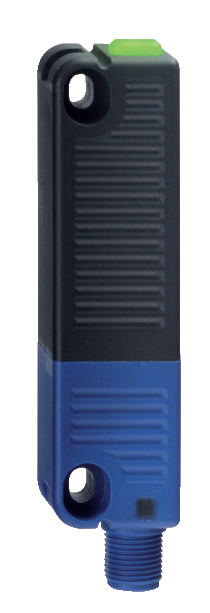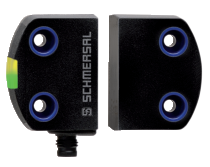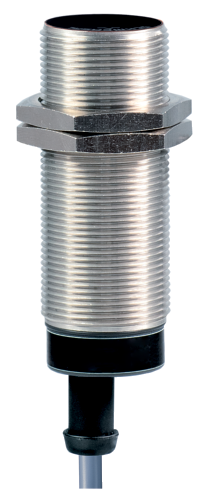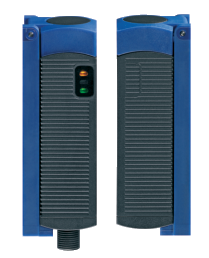Electronic safety sensors

RSS 16
- Thermoplastic enclosure
- RFID-technology for needs-based protection against tampering
- 3 different directions of actuation
- Door stop with magnetic latching
- Connection terminal or plug connection
- Suitable for series-wiring

RSS 36
- Thermoplastic enclosure
- RFID-technology for needs-based protection against tampering
- Misaligned actuation possible
- 27 mm x 108.2 mm x 35 mm
- High repeat accuracy of the switching points
- 2 short-circuit proof PNP safety outputs
- Integral cross-short, wire-breakage and external voltage monitoring of the safety cables up to the control cabinet

RSS 260
- Thermoplastic enclosure
- Simple mounting without additional angle
- RFID-technology for needs-based protection against tampering

CSS 30
- Metal enclosure
- Max. 16 sensors can be wired in series.
- Pre-wired cable, 7-pole
- Ø M30
- High repeat accuracy of the switching points
- Max. length of the sensor chain 200 m
- 2 short-circuit proof PNP safety outputs
- Integral cross-short, wire-breakage and external voltage monitoring of the safety cables up to the control cabinet

CSS 30S
- Stainless steel enclosure
- Max. 31 sensors can be wired in series.
- Connector M12, 8-pole
- Ø M30
- High repeat accuracy of the switching points
- Max. length of the sensor chain 200 m
- 2 short-circuit proof PNP safety outputs
- Integral cross-short, wire-breakage and external voltage monitoring of the safety cables up to the control cabinet
- Safety sensor can also be installed behind V4A covers.

CSS 34
- Thermoplastic enclosure
- Electronic contact-free, coded system
- Misaligned actuation possible
- 27 mm x 108.2 mm x 35 mm
- High repeat accuracy of the switching points
- Max. length of the sensor chain 200 m
- 2 short-circuit proof PNP safety outputs
- Integral cross-short, wire-breakage and external voltage monitoring of the safety cables up to the control cabinet

CSS 180
- Thermoplastic enclosure
- Electronic contact-free, coded system
- Misaligned actuation possible
- High repeat accuracy of the switching points
- Max. length of the sensor chain 200 m
- Early warning when operating near the limit of the sensor's hysteris range
- Self-monitoring series-wiring of 16 sensors
- 2 short-circuit proof PNP safety outputs
ELECTRONIC SAFETY SENSORS
In contrast to category 2 electromechanical safety switches, which require a physical contact position for safety door monitoring, contactless safety switches employ contactless detection. This technology is particularly suitable for environments with high levels of dirt or dust and in areas that require strict hygiene regulations, such as food processing. These safety sensors, which are available in both electronic and magnetic form, consist of a sensor and a target that interact with each other without direct contact. As soon as the target is detected by the sensor, the safety door is securely closed and machine operation can be started safely. Electromechanical safety sensors in the CSS and RSS series are characterised by high tolerance in the case of door shifting and enable the transfer of essential diagnosis data as well as simplified evaluation of safety signals. Another advantage of these sensors is the improved protection against tampering thanks to specific coding.ELECTRONIC SAFETY SENSORS CSS
Sensors in the CSS series use the Schmersal-developed Coded Safety Sensor technology (CSS), which is based on the pulse-echo principle. This enables a particularly rapid response. Microprocessor technology allows as many as 31 safety sensors to be daisy chained for activation via a common signal line. The evaluation takes place via a single safety relay module.
SAFETY SENSORS RSS
In developing the RSS series, the Schmersal Group's developers were successful in adapting the common RFID technology for use in safety applications. For example, the user can choose from three different types of coding:
- Basic version: The sensor accepts any suitable target.
- Coded version that only reacts to an individually assigned target. The teach-in process can be repeated as often as required.
- In a third variant, only the target taught in when the device is first switched on is accepted.
Comprehensive information on the construction forms and equipment of the CSS and RSS series safety sensors can be found in the extensive online catalogue.
.png?id=e5ef4d56dad486103335c34b5b46f1ce)